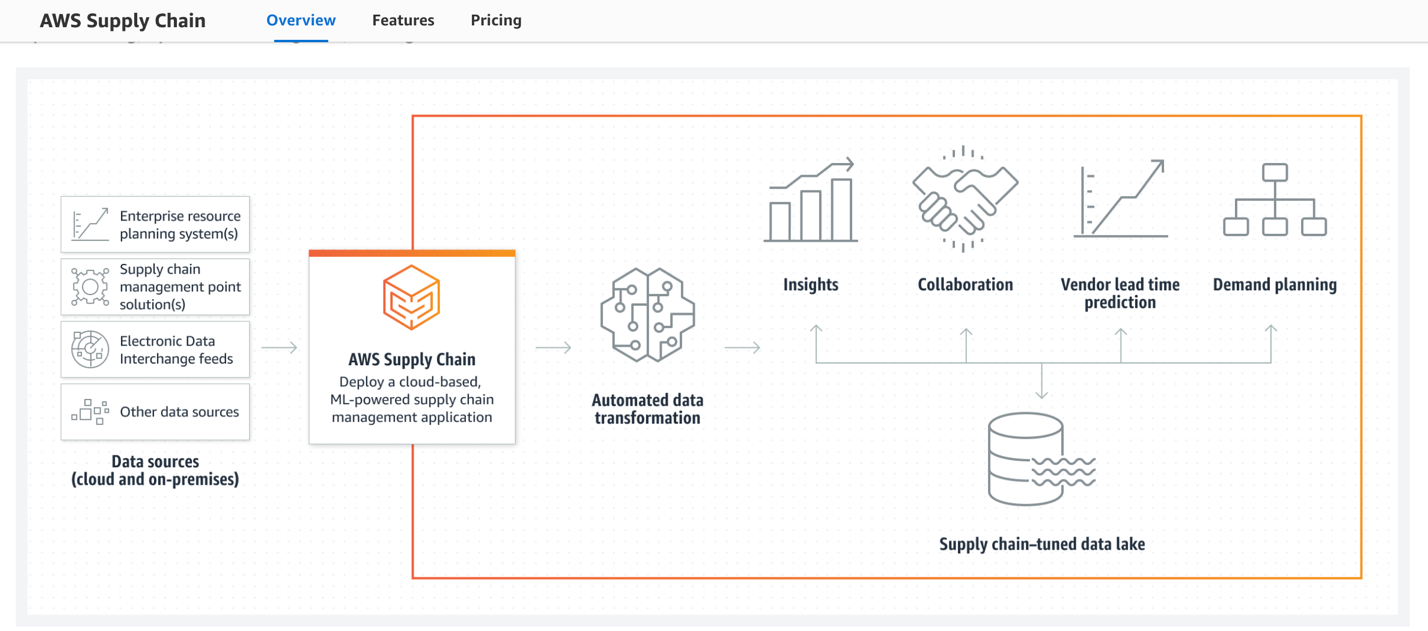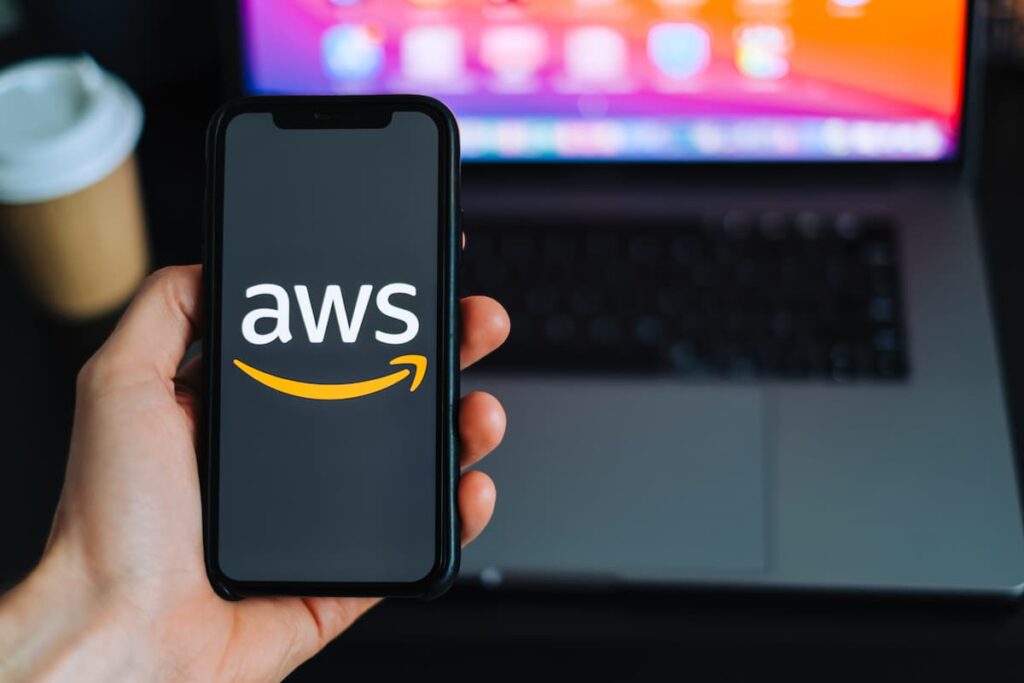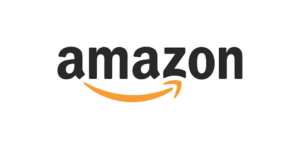
Eighteen months after joining AWS from Oracle, the leader of AWS’ new enterprise-applications business says AWS Supply Chain runs seamlessly with all major ERP and related apps and bypasses the need for expensive and risky rip-and-replace projects.
In a recent Zoom interview — and you can watch the full interview here — AWS VP of Supply Chain Diego Pantoja-Navajas said his company’s first major foray into enterprise apps draws on parent-company Amazon’s extensive experience in and expertise with modern supply chain operations and recognizes the strategically central role supply chains now occupy.
An Enormous Brand Extension for AWS
Before getting into the details of that discussion, I need to emphasize just how significant this product introduction is. While the app was announced late last year by AWS CEO Adam Selipsky, AWS was keeping it under a low profile during its “preview” period but is now ready to begin marketing the app aggressively.
So it will be fascinating to see how the category king of cloud infrastructure chooses to position its move into enterprise applications, a shift that the company has avoided assiduously for over the past 18 years as its infrastructure and platform businesses have reached more than $80 billion in annual revenue.
I’ll get to the competitive challenges AWS Supply Chain faces in a future piece, but for now, I’ll just say that it will take all of AWS’ technological skill plus its marketing prowess combined with superb customer relationships to make serious inroads against the very capable supply chain offerings from market leaders SAP and Oracle.

Supply Chain as “Orchestration of the Business”
Pantoja-Navajas is fully qualified to drive that new adventure within AWS because back in 2007, he founded a supply chain application company called LogFire that was acquired by Oracle about nine years later. Pantoja-Navajas spent almost five years at Oracle before joining AWS in October of 2021.
So when I asked Pantoja-Navajas about who the decision-makers are today for supply chain applications, he offered a high-level view that outlines just how strategically vital supply chains are for every business today, which is a key reason why AWS feels the time is right to jump into that market.
“Supply chains have become more essential for more companies as they have moved from being just a call center into being one of the biggest differentiators in helping companies increase their bottom lines,” Pantoja-Navajas said.
“If you go back a number of years, you didn’t have a Chief Supply Chain Officer — that title just didn’t exist. You might have had a VP of logistics or somebody from operations in charge, but the focus was more about managing those physical assets you had in your company. But you never thought about supply chain being so critical that it would have a seat at the table with the rest of the C-level officers,” he said.
Touches Every Department Within an Enterprise
“But now supply chain is — I don’t want to say it’s quite at the center of the table, but it certainly has a seat there because what has happened is the supply chain now touches every single department of a company, right? Finance, Procurement, of course, Manufacturing and Production but also Design and certainly now Sustainability.
“So supply chain now has a big, big influence in terms of the decisions all those teams make and the strategy of course of the entire company,” Pantoja-Navajas said.
Since supply chain dynamics have such a major impact being across so many functions within an enterprise, I asked Pantoja-Navajas to describe which types of executives are making the purchasing decisions for these strategic initiatives. I’ll leave you with his reply and encourage you to watch the whole video interview, which you can find here.
“Supply chain leaders are now working closely with the other C-level officers to improve the bottom line and reduce risks and figure out the best ways to cut costs,” Pantoja-Navajas said.
“So at the tier-one companies we’re meeting with, we talk of course to inventory leaders and supply chain leaders, but we also talk with CEOs and CFOs and Chief Procurement Officers because all of them right now are working so closely together.
“Because as technology has evolved, the swimming lanes have changed a little bit, correct? So a CFO wants to know, ‘How efficient is my supply chain, and how long until we can really start reducing those costs?’ But not so long ago, the question was just, ‘Hey, how’s my warehouse doing?’ ” Pantoja-Navajas said.
“Today, the CFO can have that orchestration of the business, and from my point of view, a lot of that new capability is coming from the supply chain.
“And if you know how to orchestrate a supply chain better than your competitors, if you know how to use the different applications and technology that exist in the market better than your competitors, and if you’re able to expose technical and business-oriented decisions into how to improve that bottom line, you’re gonna do really good.”
Final Thought
As I’ve said many times, in the Cloud Wars the ultimate winner is always the customer because business executives benefit greatly from the never-ending innovations stemming from the savage competition among the world’s largest and most influential cloud providers.
In this case, with SAP and Oracle being the world’s leading suppliers of cloud-based supply chain applications and many smaller players offering capable point solutions, the entry of AWS into this dynamic category will force all of the players to offer better and higher-value solutions to their customers.
And it wouldn’t surprise me at all if AWS decides down the road to add other enterprise applications to its new Supply Chain solution.
(Be sure to check out the full video interview with Diego Pantoja–Navajas.)
To hear more data modernization, AI/hyperautomation, cybersecurity, and growth strategies from CIO practitioners, tune into Acceleration Economy’s Digital CIO Summit, which takes place April 4-6. Register for the free event here.









